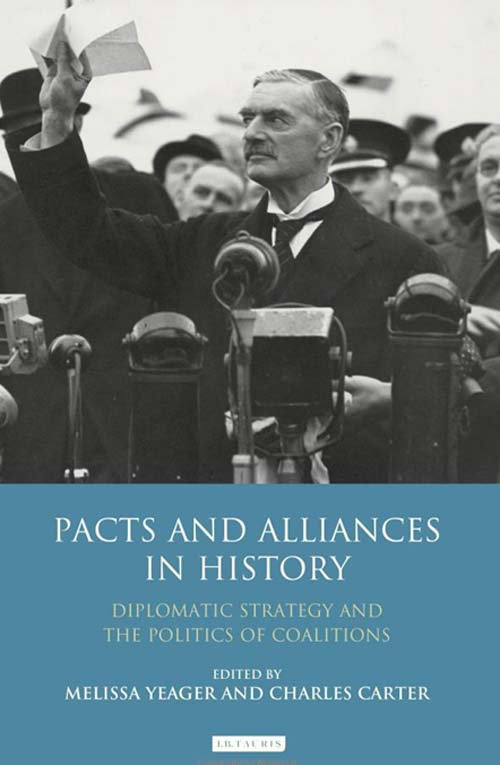Pacts and Alliances in History
Review

Pacts and Alliances in History. Diplomatic Strategy and the Politics of Coalitions, edited by Melissa P. Yeager and Charles Carter, I.B. Tauris, 2012, 295 pp., £59.95, ISBN 9781848857735
A valuable collection on pacts and alliances, the building blocs of diplomacy and statecraft. Based on a conference held at the Mershon Center for International Security Studies at Ohio State University in 2010, this is a cross-disciplinary collection bringing together historians and political scientists. With the exception of one essay, all the contributions relate to the twentieth century. This exception, by Jean-Bertrand Ribat, a political scientist, assesses Britain's role in coordinating opposition to Revolutionary and Napoleonic France. Ribat disagrees with theories of the balance of power that do not consider a coordinator nation necessary. Instead, he presents Britain's resources, invulnerability and leadership quality as key factors. An interesting piece that deserves consideration alongside Paul Schroeder's larger-scale assessment of the nature of the Napoleonic system.
For the twentieth century, there are considerations of successes and failures, both real and apparent. Alliances considered include the Korean-American (William Stueck), Turkey's accession to NATO (James Helicke), the American Leadership role in NATO in the 1960s (Mark Rice), Anglo-American relations (Kathleen Burk), the Sèvres Pact (Michael McKoy), the Anglo-French-Soviet talks of 1939 (Teddy Uldrichs), the European Defence Community (Melissa Yeager), and the Soviet-Egyptian alliance (Yasser El-Shimy). The book also includes an introduction and conclusion as well as a consolidated bibliography.
Kathy Burk's piece on Anglo-American relations will attract most attention. It is characteristically well-written and wideranging, but possibly tries to cover too much, not least because it goes back to the origins of relations between the two states. To make the opposite point, however, in one respect this approach does not go far enough as the route to Anglo-American alliance owed much to the relationship from colonial days. Moreover, longstanding economic links were crucial. Thus, to suggest that alliances rest on a shared enmity to others is insufficient.
Greater complexity is offered by McKoy. Pointing out that an Anglo-Israeli coalition seemed quite unlikely in 1956, given the longstanding hostility between the two nations, he argues that this very hostility was crucial to coalition formation ‘since it diminished the temptation to pass the buck and increased fears that their individual aims would not be accomplished' (p. 152). Yeager sees the EDC as having a number of positive features, notably in preparing the way for the WEU and NATO, while, she argues, the practice of negotiating and securing national interests in the EDC negotiations served the states of Europe well thereafter. El-Shimy regards the end of the Egypt-USSR alliance as due to an Egyptian feeling of abandonment combined with the realisation of the illusiveness of its regional ambitions and the need to get the USA to force a settlement on Israel.
The decision to focus on the last century does not vitiate the book, although it raises questions about the operation of alliances and pacts in very different technological, political, social and cultural contexts. Indeed, a longer timespan might have suggested the need to consider anthropological dimensions as well as work on strategic culture in other periods, notably that of China, which tends to be underplayed in this book.
The collection does reveal the revenge of the specific on the theoretical. For example, the emphasis on the importance of the Anglo-American relationship to failure and success in other negotiations discussed in the collection could be readily qualified if a different chronological perspective is adopted. Moreover, the individual pieces reveal that definitions of success and failure vary greatly, with ideological outcome, for example, being more significant in some cases than others. A key conclusion, however, that of the importance of the inequality between alliance partners repays consideration.


